Have you ever wondered why so many crows appear all of a sudden, transforming a seemingly peaceful setting into a scene filled with their distinctive noises?
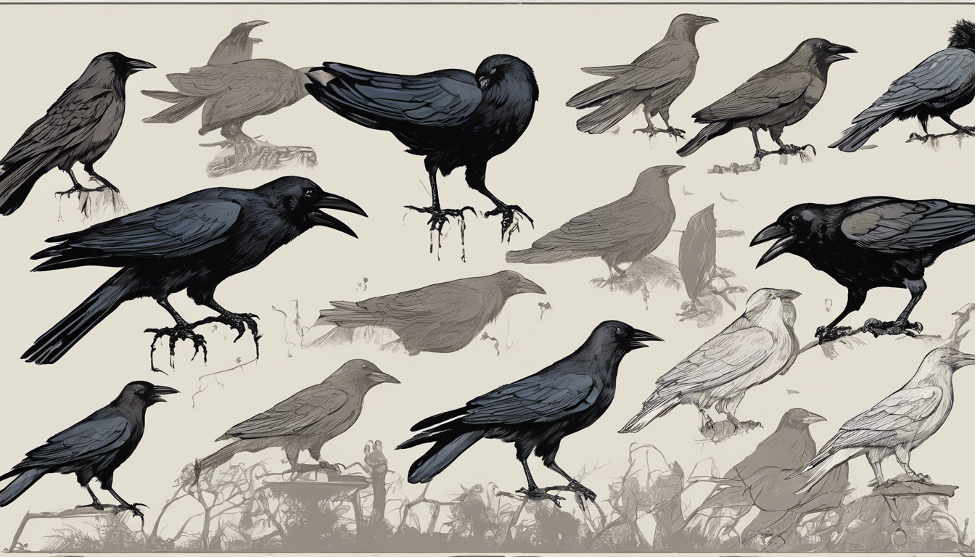
This phenomenon has puzzled many, leading to a growing curiosity about these intelligent, yet often misunderstood birds. Understanding the reasons behind these sudden gatherings is crucial, not just for the curious minded, but for those seeking ways to manage their presence.
As crows increasingly make their homes in urban areas, the balance between cohabitation and conflict becomes a subject of concern for many.
This article delves into the characteristics of crows, shedding light on why these birds gather in large numbers so unexpectedly. You’ll learn about the factors that attract crows to urban locales and why their behavior seems more pronounced at certain times.
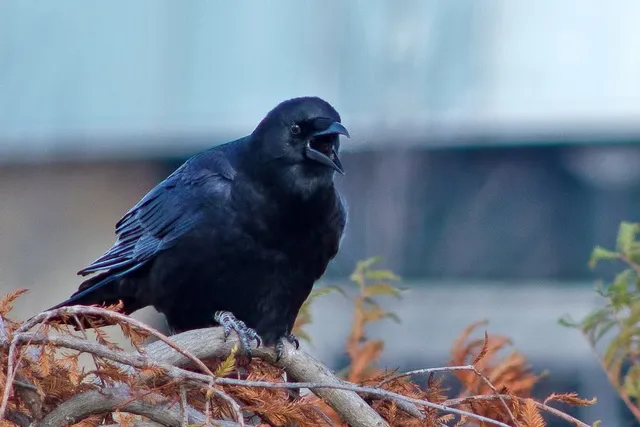
Insight into managing large crow roosts and practical advice on getting rid of crows, or at least minimizing conflicts with them, will also be discussed.
Characteristics of Crows
Crows are highly adaptable and intelligent birds, recognized by their all-black plumage and distinctive cawing voices.
These birds exhibit a variety of feeding behaviors; they are omnivores and their diet includes insects, seeds, and fruits, as well as opportunistic scavenging of garbage and carrion.
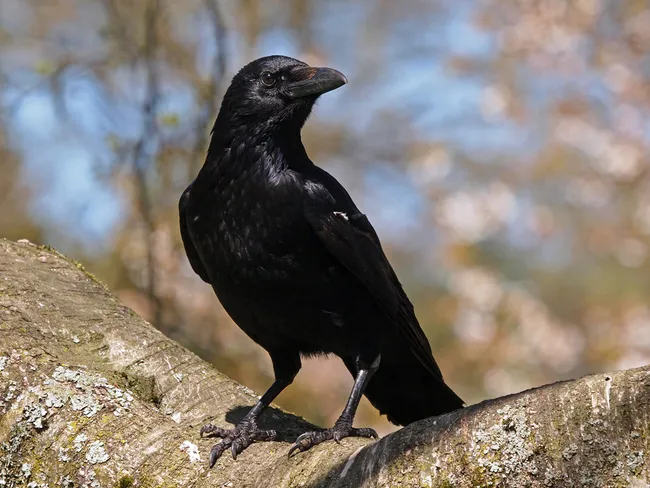
Notably, American Crows often forage on the ground, utilizing their strong bills to eat almost anything they can find.
Their social behavior is complex, involving both solitary and group activities. Crows can be seen foraging in groups, and they are known for their problem-solving skills and ability to communicate with each other through a variety of vocalizations. These vocalizations are not just random; they vary in length and pattern, indicating different meanings and purposes.
Crows also exhibit remarkable behaviors such as tool use and strategic food caching. They have been observed making and using tools to access food and storing food in short-term caches. Their intelligence is further demonstrated by their ability to recognize human faces and remember potential threats or benefactors.
Physically, crows are large, long-legged birds with thick necks and heavy, straight bills. Their flight is characterized by a methodical flapping, rarely interspersed with glides. The plumage of a crow is not just black; it can appear glossy or scaly depending on the light and the age of the feathers.

Understanding these characteristics helps explain why crows are so successful at adapting to a variety of habitats, including urban environments. Their ability to thrive in diverse environments alongside humans shows their incredible adaptability and intelligence.
Why So Many Crows All of a Sudden?
Crows are not sedentary throughout the year; they migrate from northern regions to more temperate areas from late September to early November, following natural landscapes like ridge lines, valleys, or riverways.
As the seasons change, particularly by mid-summer to winter, crows become increasingly social, forming large roosts that can include thousands of individuals from wide-ranging areas.
These gatherings serve multiple purposes. They provide a social platform akin to a ‘dating bar’ for immature crows to meet potential mates and an educational arena where younger crows learn essential survival skills and social behaviors.
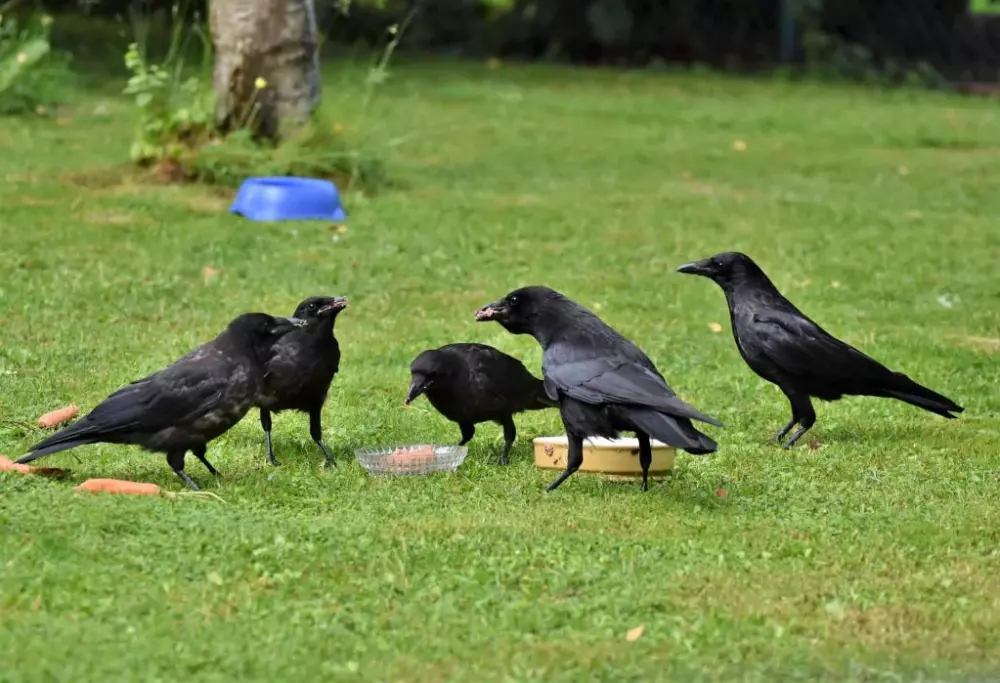
The cooler temperatures of autumn and winter prompt crows to form these large groups, which offer several advantages. Roosting close together helps crows conserve heat and increases their chances of surviving cold nights. This communal living also enhances safety, as a large group can better fend off predators. Moreover, these gatherings are not just about physical survival but also about information sharing. Crows use these opportunities to communicate valuable information about food sources, which makes foraging more efficient and safer.
This behavior is evident in other bird species as well and is particularly vital during the non-breeding season when survival challenges like food scarcity and predation are more pronounced.
Why Are the Crows Going Crazy in Urban Areas?
In urban areas, the increasing presence of crows suddenly can be attributed to several factors that make cities attractive to these birds.
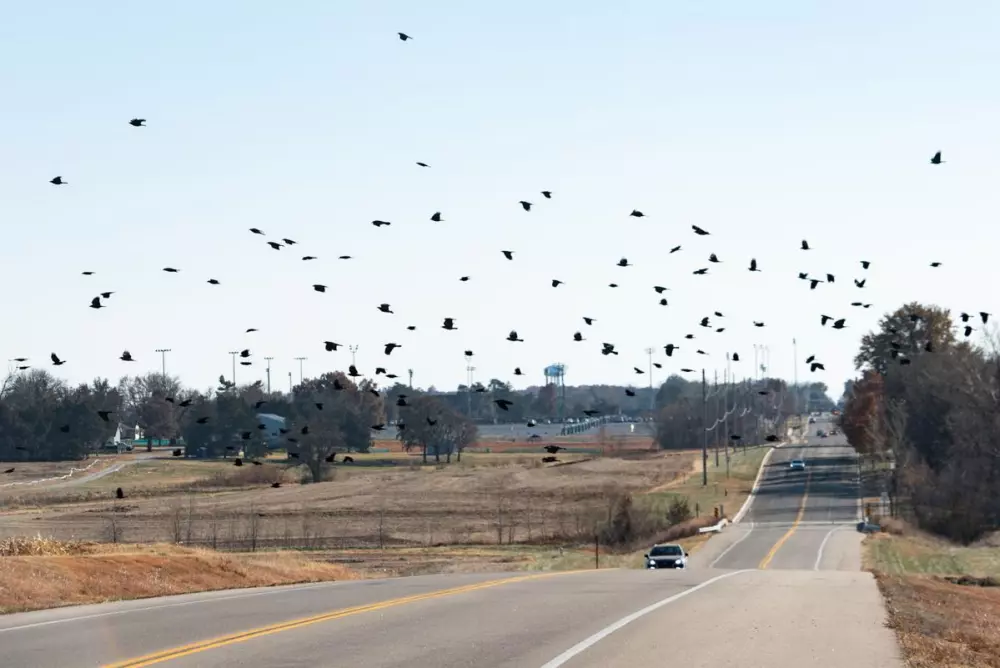
Firstly, the abundance of food sources in urban settings, such as open trash bins and food spills, provides easy meals for crows, drawing them into these areas. Additionally, the warmth of cities due to the urban heat island effect offers a more comfortable environment, especially during colder months.
Another reason crows may seem more active or “crazy” in urban areas is the lack of natural predators. With fewer threats, crows can afford to be more visible and vocal, which might be perceived as increased craziness.
Furthermore, the architectural features of urban landscapes, like flat roofs and tall buildings, provide safe nesting and roosting spots, encouraging crows to settle and multiply in these areas.
These factors combined create an ideal setting for crows, leading to their noticeable and sometimes disruptive presence in urban environments.
Dealing with Large and Sudden Crow Roosts

Crows form large communal roosts, particularly during the harsher winter months, to survive by conserving heat and enhancing safety through numbers. If you’re facing issues with large crow roosts, consider non-lethal, humane strategies to encourage them to move. Using poisons or lethal methods is not only inappropriate but also illegal under federal laws, risking unnecessary crow deaths and potential harm to other wildlife.
Effective Non-Lethal Strategies:
- Tolerance: Understand that these roosts are temporary and crows will disperse as warmer weather returns.
- Reduction of Human Food Subsidies: Eliminate accessible human food sources such as unsecured garbage and compost which attract crows.
- Reduction in Outdoor Lighting: Diminish outdoor lighting which may attract crows, ensuring lights are directed downward to reduce attraction.
- Active Hazing: Employ noisemaking tactics like banging pots or using scare devices such as reflective tapes and scarecrows. For larger roosts, professional methods like sound cannons or falconry may be necessary.
Remember, these strategies might only cause short-distance displacement of crows, and continuous application may be required to keep them from returning. Always consult with professionals and check local wildlife regulations to ensure compliance with legal standards.
Preventing Crow Intrusion in Your Area
To effectively prevent crow intrusion in your area, focus on making your environment less attractive to these intelligent birds. Begin by securing food sources; ensure trash bins are intact and have tightly fitting lids to keep crows from accessing waste. Regularly clean up any pet food leftovers and secure compost bins.
- Similar article: Permanently Prevent Cats from Pooping in My Yard
Habitat Modification
Modify your yard by removing potential nesting sites and roost trees. Use physical barriers like netting or wires to protect high-value crops and areas where crows are unwanted.
Use of Deterrents
Implement various deterrents to discourage crows. Visual deterrents such as Mylar® tape, scarecrows, or hanging decoys can be effective. Additionally, auditory deterrents like noise-makers, pyrotechnics, and distress calls can help keep the birds at bay.
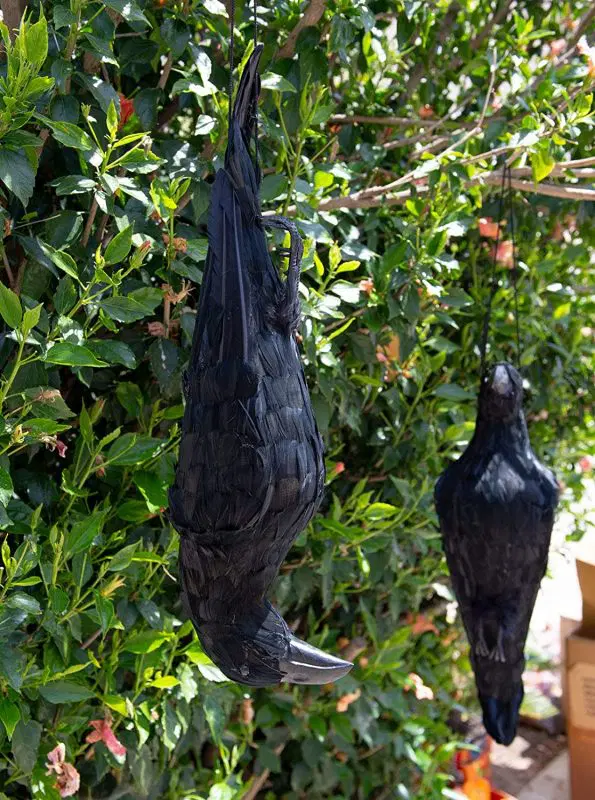
Consistent Management
Consistency is key in crow management. Regularly rotate deterrents and strategies to prevent crows from becoming accustomed to them. Combine different methods for a comprehensive approach to effectively reduce crow presence in your area.
By following these strategies, you can create a less inviting environment for crows, encouraging them to move to other areas.
Conclusion
Throughout this exploration into the sudden appearances of crows, we’ve unwrapped the layers of their behavior, intelligence, and adaptability that draw them to urban environments, especially during specific times of the year.
From their complex social interactions and remarkable problem-solving abilities to their strategies for surviving and thriving in close proximity to humans, crows demonstrate a fascinating blend of natural instincts and learned behaviors.
These insights not only enhance our understanding of these often misunderstood birds but also provide practical advice on coexisting with them harmoniously.
Addressing the challenges posed by large crow roosts in urban areas requires a balance of tolerance, strategic deterrence, and habitat adjustments.
By applying humane, non-lethal strategies and making our environments less inviting to crows, we can mitigate conflicts and foster a more peaceful coexistence. Ultimately, the more we learn about crows and their behaviors, the better equipped we are to appreciate their presence and navigate the complexities of urban wildlife management.
FAQs
Why Do Crows Gather in Large Numbers Suddenly?
Crows congregate for several reasons: they forage more efficiently in groups, enjoy safety from predators due to their numbers (especially at night), and share information about resources (like a newly discovered food source at the local KFC dumpster).
What is the Significance of Encountering Multiple Crows?
Encountering a group of crows carries a message of introspection and learning. It suggests that one should reflect on their experiences and learn from the surroundings, as crows themselves are always learning from humans, other animals, and their environment.
What is the Spiritual Meaning Behind a Flock of Crows?
From a spiritual perspective, seeing a crow or a flock of crows is considered a positive omen. It signifies imminent, unexpected changes that will ultimately lead to favorable outcomes. A flock of crows also symbolizes companionship and protection, indicating that you are surrounded by supportive individuals or that a departed loved one is keeping a watchful eye over you.
Can Crows Serve as a Warning for Potential Danger?
Yes, crows can act as an early warning system for danger. They often emit loud caws to alert other crows of potential threats. If the danger is significant, crows may band together to confront and drive away the common enemy collectively.
[…] Read also: Why so many crows appear all of a sudden […]